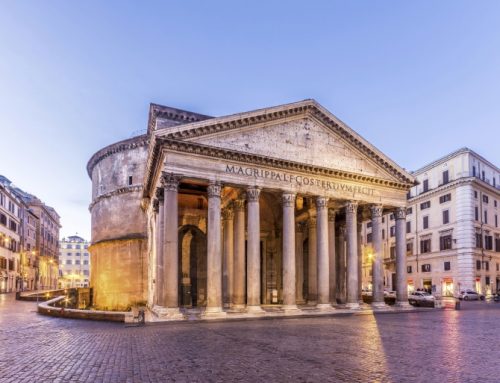In the first century Rome’s Christians did not have their own cemeteries. If they owned land, they buried their relatives there, otherwise they resorted to common cemeteries, where pagans too were buried. That is how Saint Peter came to be buried in the great public “necropolis” (“city of the dead”) on Vatican Hill, available to everybody. Likewise Saint Paul was buried in a necropolis along the Via Ostiense.
In the first half of the second century, as a result of various grants and donations, the Christians started burying their dead underground. That is how the catacombs were founded. Many of them began and developed around family tombs, whose owners, newly converted Christians, did not reserve them to the members of the family, but opened them to their brethren in the faith. With the passage of time, these burial areas grew larger by gifts or by the purchase of new properties, sometimes on the initiative of the Church itself. Typical is the case of Saint Callixtus: the Church took up directly the organization and administration of the cemetery, assuming a community character.
With the edict of Milan, promulgated by the emperors Constantine and Licinius in February 313, the Christians were no longer persecuted. They were free to profess their faith, to have places of worship and to build churches both inside and outside the city, and to buy plots of land, without fear of confiscation. Nevertheless, the catacombs continued to function as regular cemeteries until the beginning of the fifth century, when the Church retumed to bury exclusively above ground or in the basilicas dedicated to important martyrs.
When the barbarians (Goths and Longobards) invaded Italy and came down to Rome,they systematically destroyed a lot of monuments and sacked many places, including the catacombs. Powerless in the face of such repeated pillages, towards the end of the eighth century and the beginning of the ninth, the Popes ordered to remove the relics of the martyrs and of the saints to the city churches, for security reasons.
When the transfer of the relics was completed, the catacombs were no longer visited; on the contrary, they were totally abandoned, with the exception of Saint Sebastian, Saint Lawrence and of Saint Pancratius. In the course of time, landslides and vegetation obstructed and hid the entrances to the other catacombs, so that the very traces of their existence were lost. During the late Middle Ages they didn’t even know where they were.
The exploration and scientific study of the catacombs started, centuries later, with Antonio Bosio (1575 – 1629), nicknamed the “Columbus of subterranean Rome”. In the last century the systematic exploration of the catacombs, and in particular of those of Saint Callixtus, was carried out by Giovanni Battista de Rossi (1822 – 1894), who is considered the father and founder of Christian Archaeology.







Leave A Comment
You must be logged in to post a comment.